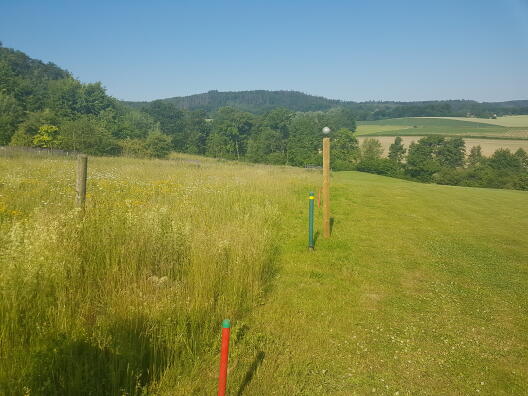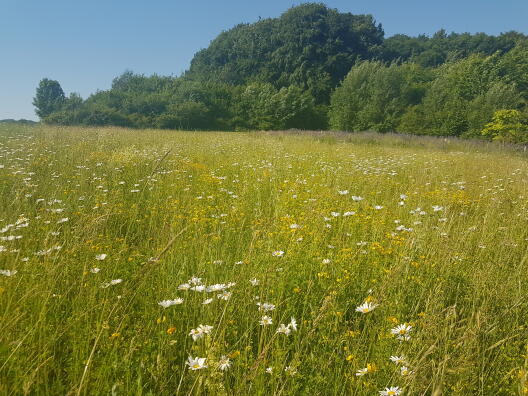
© D. Rupprecht Project
GolfBiodivers - Biodiversity effects of an ecological enhancement of golf courses - a building block of the National Strategy on Biological Diversity
Severe declines in biodiversity and many ecosystem services in large parts of Central Europe require coordinated action by all land users with the aim of better protecting biodiversity and restoring species-rich, multifunctional cultural landscapes. The collaborative project GolfBiodivers focuses on the landscape ecological assessment and enhancement of biodiversity of golf courses as a building block of the national biodiversity network with a special focus on the promotion of insects. Four universities (Munich, Freiburg, Kiel, Münster) and the German Golf Association are involved.
For many years, usability and aesthetic quality were the most important criteria for golf course design, while biodiversity and ecosystem services were hardly considered (Baldock et al. 2015, Elmqvist et al. 2015). Thus, species-poor grass seeding, trivial woody vegetation, and ornamental plant beds that attract few pollinators and other beneficial insects predominate on many courses. However, the establishment of small water bodies, dry stone walls, orchard plantings and hedges on some courses already contributes to the promotion of biodiversity, climate adaptation and environmental education, and the development of further ecologically multifunctional golf courses could be an important building block of regional biodiversity networks (BfN & DGV 2005).
In an application-oriented research project, the flora, fauna and landscape effects of 64 golf courses are now to be investigated nationwide and subsequently optimized through targeted measures. The results are to serve as a model and, coupled with intensive communication measures, ensure that the indispensable contribution of golf courses to biodiversity becomes even clearer.

© D. Rupprecht Methods
The concrete measures of the project include 5 stages:
- Landscape analysis of the biodiversity of 32 plants.
- Establishment of a package of measures on each 3 ha of the selected plants:
- Improved mowing (adjustment of frequency, clearing of mown material).
- Seeding of lowland meadows
- Seeding of flowering strips
- Seeding of margins and
- Enhancement of shrubs
- Investigation of the effects of the enhancement on plants, grasshoppers, butterflies, wild bees, birds and bats with the help of control surveys.
- Implementation of the results in an enhancement plan for a further 32 sites.
- Public relations work on biodiversity on golf courses: training of golf course staff, networking with other sports facilities, communities and associations, environmental education for school classes, etc.
Actors
Project partners are
- the Technical University of Munich
- the Albert-Ludwigs-University Freiburg
- the Christian-Albrechts-University of Kiel
- the Westphalian Wilhelms University Münster and
- the German Golf Association (DGV)
The project is supported by the German Federal Agency for Nature Conservation (BfN) with funds from the German Federal Ministry for the Environment, Nature Conservation, Nuclear Safety and Consumer Protection (BMUV). It is part of the federal program Biological Diversity. The project has a duration of 01.04.2023 - 31.03.2029.
More information on the project is available on the webpages of the German Golf Association (DGV) (here) and of the German Federal Agency for Nature Conservation (BfN) (here).


